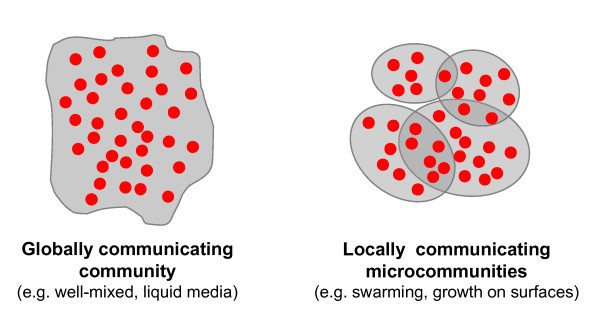Figure 1.
The local communication hypothesis (right) stresses that members of microbial communities communicate locally, so only locally recruited microcommunities are in close contact. Microcommunities are defined in an overlapping fashion so that signals will eventually reach all members of the community. The hypothesis predicts that local communication conveys stability against cheater mutants via a local collapse of the affected microcommunities that does not necessarily spread to the entire colony. The cells are denoted by red dots, the gray contour indicates the boundaries of communication.

